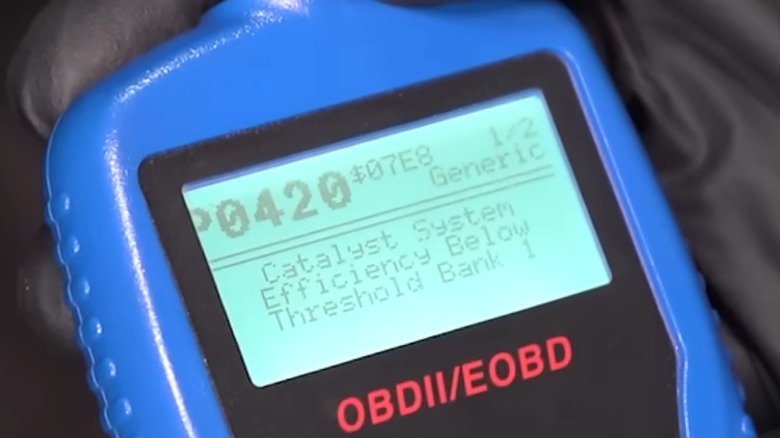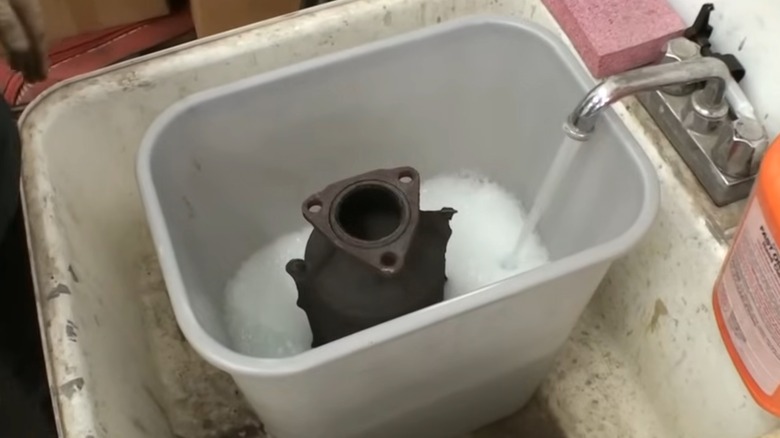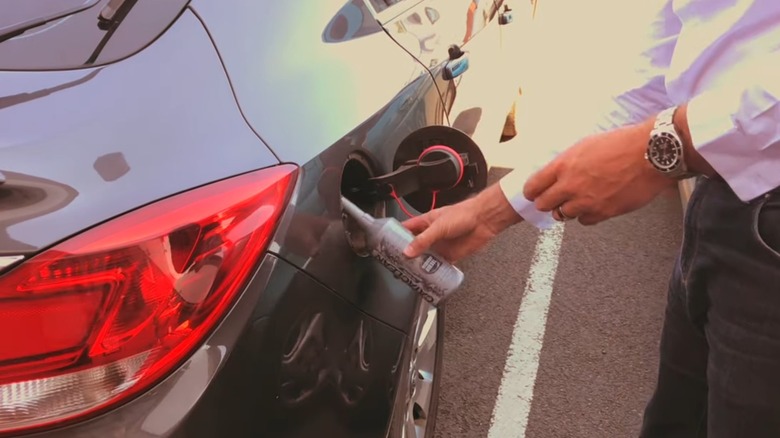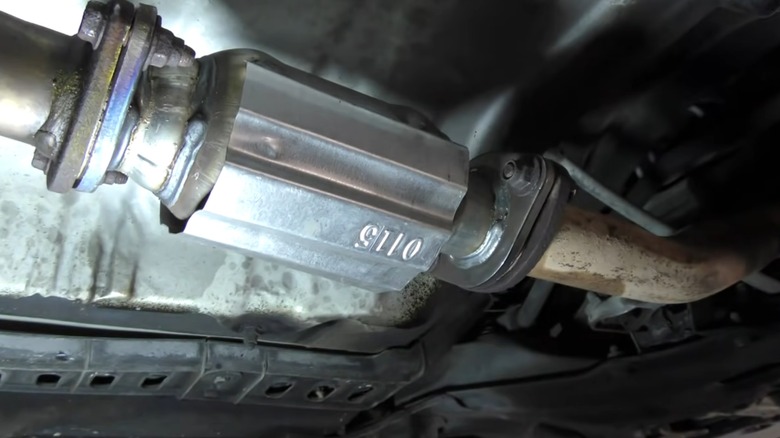How To Clean Your Vehicle's Catalytic Converter: 2 Methods To Try At Home
Thanks to the Clean Air Act of 1970, all cars sold in the US after 1975 must have catalytic converters (cats) installed on them. That means that if you drive a relatively modern car, it should have one of these parts. Catalytic converters are designed to help prevent our vehicles from dumping excess pollutants into the atmosphere. They're necessary thanks to the extremely harmful gasses that fossil-fuel-powered engines expel, and they're an integral part of modern emissions control systems.
However, not everyone is a fan of these new systems. In reality, emissions control systems help our cars perform more efficiently, but they do come with some downsides. For one, catalytic converters are extremely expensive, meaning people like to steal them and replacements can be pretty big financial burdens. Secondly, these devices are prone to wear and tear over time, which means that even if yours is never stolen, you may have to pay to service or replace it at some point.
That last bit is what leads us to the primary question we'll address in this article: how can you clean your catalytic converter at home? It's an important and common question, as catalytic converter repairs are pricey, to say the least. Fortunately, it isn't always necessary to pay a mechanic to do the job for you, and there are some methods you can try at home to clean your cat before paying a pro. As a former auto repair technician and lifelong gearhead, I'll break them down for you. Together, we'll cover a couple of different methods you can use to clean your cat, and we'll even explain why you might need to do so. Let's dive in.
Why would you need or want to clean your car's catalytic converter?
Before we dive into how to clean your catalytic converter, it may be helpful to explain why you might need to clean it in the first place. We mentioned that catalytic converters are prone to wear and tear over time. While they're pretty durable, most cats have an expected lifespan of around 10 years. However, that estimated lifespan depends on a lot of factors, like your driving style, the fuel you use, how well you maintain your vehicle, and the environment in which you drive.
Assuming you take excellent care of your car, your catalytic converter may still fail due to age or environmental factors. One of the common ways in which old cats fail is by becoming clogged up by debris and corrosion, or as the result of bad fuel or another mechanical malfunction. In these cases, it's often possible to glean a bit more life out of the converter, but it does require a deep clean — and even then, it doesn't always work.
But how do you know if your catalytic converter is clogged? Well, that's where things get a bit tricky. The symptoms of a clogged cat — which include things like engine misfires, reduced or sluggish performance, and a check engine light — can be very similar to the symptoms of a failed catalytic converter that's already beyond repair. Furthermore, other issues with your car can also cause many of the same problems. Because of that, if you experience any abnormal behavior when driving your car, it's vital that you visit a professional mechanic as soon as possible to diagnose the problem and prevent further damage. Then, if it turns out your cat is clogged, you can decide whether to try a DIY fix or not.
Try soaking the converter in a detergent overnight
If your catalytic converter is clogged, one of the most effective things you can try to do is soak the cat in a cleaning solution overnight. The downside to this method — and many other DIY cleaning methods — is that you have to remove the cat from your car. Usually, that means crawling under the car, locating the cat, and removing the bolts or brackets holding it in place. However, if your vehicle has an aftermarket exhaust system or the cat has been replaced in the past, you may have to cut it off with some type of power grinder or saw.
Once you've removed the catalytic converter from your car, you can get started on the cleaning process. The cleaner you use for this method is up to you. Many DIYers choose to use regular dish soap or laundry detergent, but you can also use a dedicated engine degreasing product from your local auto parts store. In addition to your cleaner, you'll also need a bucket or storage container large enough to fit your catalytic converter.
Then, pour in a healthy amount of soap or detergent if using household supplies — if using a harsher degreaser, use the instructions on the bottle to determine your cleaner: water ratio. Place the cat inside the container, fill it up with water, mix everything around a bit, and let it all soak for at least 24 hours. When you pull the cat out of the soapy water, rinse it thoroughly using a pressure washer or garden hose. Then, let it dry completely before reinstalling it on your car.
Use a fuel additive
Besides removing the catalytic converter from your car, the most common and effective way to clean a cat is by using a fuel additive. Catalytic converter cleaners are a type of fuel additive developed to remove buildup from the honeycomb filters inside the cat. They're designed to be poured into the fuel tank. Then, as you run the vehicle, the additive cycles through the fuel system and out the exhaust pipes, traveling through the catalytic converter and, hopefully, removing any excess gunk and carbon buildup.
That means that you don't have to remove the catalytic converter when using a fuel additive to clean it. Instead, wait until your gas tank has about one quarter left and pour in the appropriate amount of cleaner. Note that different cleaners may require you to add different amounts, so it's important to read the instructions thoroughly before pouring the liquid into your gas tank. After adding the cleaner to your fuel tank, get in the car and drive vigorously for between 15 minutes and 1.5 hours, depending again on the type of cleaner you purchase and its instructions. That driving allows the solution to make its way through your fuel and exhaust systems, and it lets the engine and catalytic converter get hot enough for the chemicals to take effect.
This method can work pretty quickly in some cases. If you decide to try out a catalytic converter cleaner due to a check engine light code like P0420, the additive can often be an easy fix. However, it doesn't always work, which leads us to our next point.
Remember that cleaning won't always work
We mentioned that cleaning the catalytic converter doesn't always work. That's because after a certain point, there isn't much you can do for extreme wear and tear. Remember that even though catalytic converters are extremely durable components, they don't usually last forever. Even when cared for properly, the average lifespan tends to be around 10 years.
Why even go to all the trouble to clean the cat, then? Well, it's also important to keep in mind that catalytic converters can be extremely expensive. Even the cheapest replacement cat is likely to cost a couple of hundred bucks, while many come with price tags upwards of $1,000. Factor in the mechanic's labor time to replace the part, and you're looking at a pretty steep repair bill.
Those high costs are exactly why many people try to clean their catalytic converters before diving right into a replacement. If the cleaning process doesn't work, you don't have much to lose. On the other hand, if you do manage to clean the cat, you could save yourself thousands of dollars.
Finally, remember that even if the cleaning process does work, it's probably just a temporary fix. You may be able to get a few more months or even years of service out of your catalytic converter, but you'll most likely have to replace it at some point in the future.




